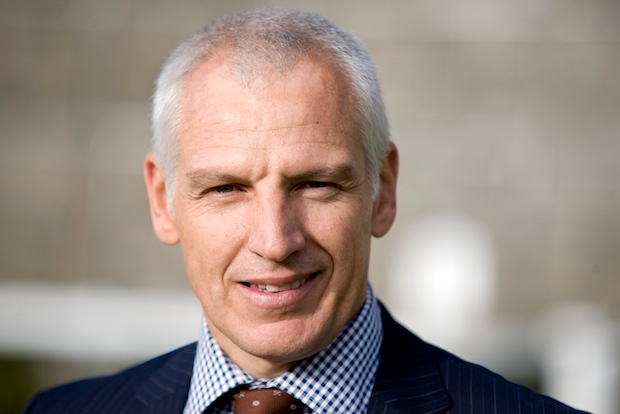British racing is such a quirky minefield that some were surprised when in 2011 the authorities chose Paul Bittar, a man from Wagga Wagga with most of his racecourse experience in New Zealand and the state of Victoria, to run the British Horseracing Authority. Australian cricketers, it used to be said, had a standard uniform: green caps and a chip on the shoulder. When I mentioned in front of a racing club audience the other night that New Zealanders will bet on anything that moves, and if it doesn’t move they will kick it and bet on when it will start to move, Paul was sufficiently Australian to chide: ‘You’re not suggesting, are you, that Australians would be any less eager to have a bet?’ It set the tone for an evening of good humour and candid common sense. We have, thank God, a realist in the saddle.
Paul arrived as the BHA had managed to turn the introduction of new whip rules for jockeys into a public relations fiasco on the first Champions’ Day. Racecourses and owners were publicly at each others’ throats with owners, via the Horsemen’s Group, threatening racecourse boycotts. Racing was one long moan about poor prize money and low-grade fixtures.
Swiftly, he defused the whip controversy by reintroducing discretion for racecourse stewards. He has achieved warmer relations with the betting industry, on whom racing depends for its finances. He has cooled the factions and reasserted the BHA’s authority.
‘I knew there were quite a lot of good haters in the sport. I thought that I could bring a more commercial approach. I also felt that the BHA had lost its way a bit and there was a good opportunity for the governing body to reconnect with the sport.’
Is there too much racing? ‘The way the economics of the sport in Britain work [through a levy on bookmakers], the sport is incentivised to put on more product — more races, more fixtures. The fixtures list is put on for racegoers and the betting industry in the first instance, so we look to fill it from a demand perspective — how great is the demand for racing? Once we know what the demand is, we say, “Do we have enough horses to fill that?” So we then look at it from a supply perspective. Over the past seven years the average field size has declined by almost two horses per race. You could say that is because we run too many races, too many fixtures. The horse population has been in decline, racing has become slightly less competitive, that is probably true. But the economics of the sport are actually better.’
Owners, he insists, are not in decline if you include syndicate members with less than half a horse. But quality racing has declined. There are fewer Class 1 and Class 2 races, more low-level Class 5 and Class 6 races.
‘There is clearly a market for people who just like to have a bet and that is a reason why we run some twilight fixtures and that we run class fives and class sixes. A lot of those races actually cross-subsidise the higher-quality races. Do I wish that every day we were watching quality racing? Absolutely. But that doesn’t really happen anywhere, apart from Hong Hong.
‘One of the challenges when I started was the tariffs scheme from the Horsemen’s Group [setting specific prize levels for each grade of race at each track]. That actually incentivised racecourses to downgrade because they could run a cheaper programme with more lower-grade racing. What we sought to do without being too blunt about it was to blow up that model and actually put back minimum prize levels. Because the BHA had sort of abdicated its responsibility on minimum prize money, racecourses had downgraded their race programmes. We put back in place minimum prize-money levels and set the optimum race programme and that has lifted the contributions from racecourses back into prize money. In 2014, compared with 2013, there will be almost £10 million extra.’
Paul Bittar confessed after the Godolphin affair that BHA cutbacks in security spending and testing of racehorses for illegal substances had gone too far and would be reversed. But what about the Barney Curley coup, when massive gambles were landed by the accumulated victories of four previous no-hopers? One of the successful participating trainers, John Butler, argued that ‘low prize money causes corruption’. Was he right?
‘There are two aspects. The vast majority of our investigations are connected to low-value racing. The vast majority of integrity issues and the vast majority of cases that we deal with relate to low-grade racing. That is unarguable. I wouldn’t say that low-value racing causes corruption. But there is a stronger incentive to cheat if prize money is poor. We are not oblivious to that fact.
‘The Barney Curley coup involved some pretty clever placement of horses and some pretty good training to be that well organised. It is a bit embarrassing from racing’s perspective when that happens but my concern is not so much about the four winners on that day as about how the trainers get themselves into a position where those four horses can win on the day.’






Comments